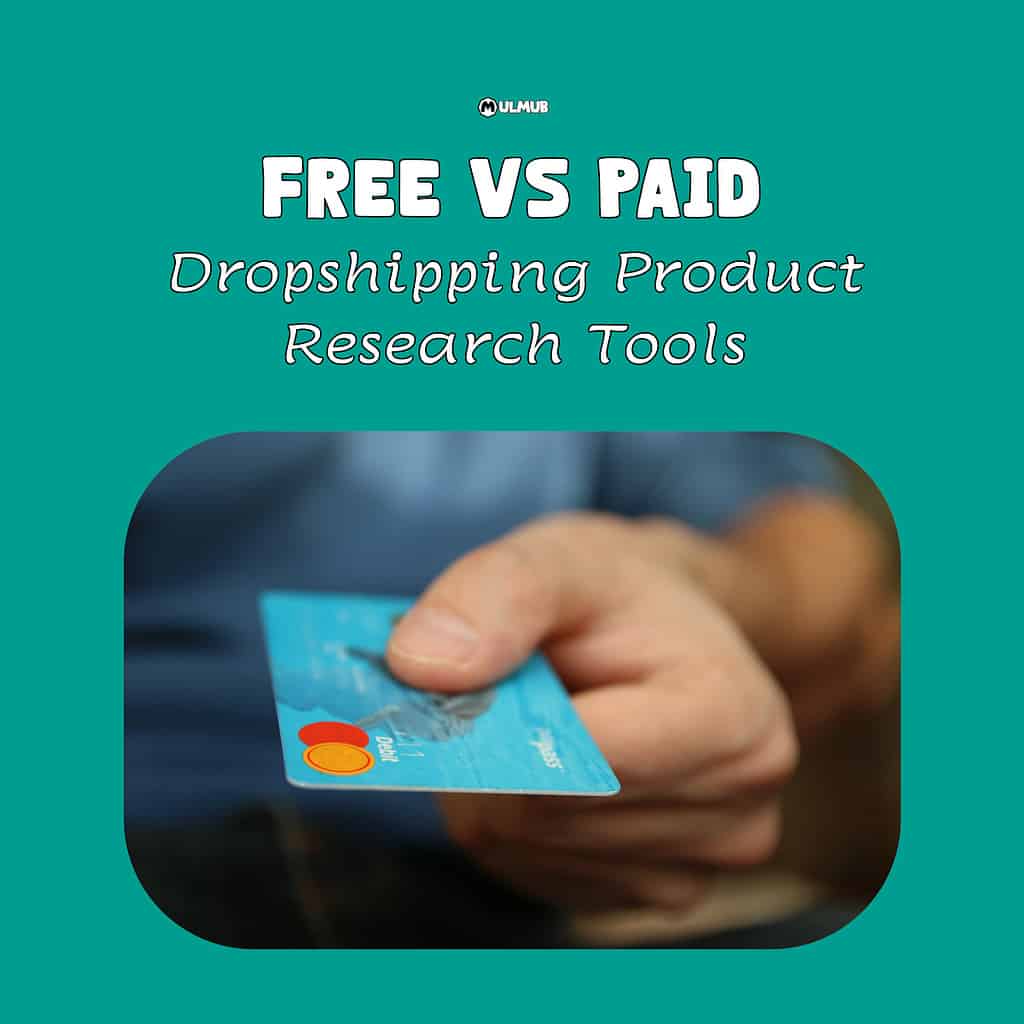In dropshipping, knowledge is power.
The right product research tools can empower you to uncover lucrative niches, pinpoint winning products, and stay ahead of the competition.
They are the compass guiding your journey towards a profitable and sustainable dropshipping business.
As a dropshipper, your primary goal is to find products that resonate with your target audience and are in high demand.
These products should also offer a healthy profit margin, allowing you to thrive in the competitive e-commerce landscape.
However, without the assistance of reliable product research tools, this task can be overwhelming and time-consuming.
Now, let’s address the heart of the matter – should you opt for free dropshipping product research tools or invest in paid ones?
This is a decision that can significantly impact your business, and we’ll explore the advantages and drawbacks of both options in the following sections.
So, without further ado, let’s dive into the world of dropshipping product research tools and uncover which path – free or paid – is the right one for you.

Affiliate Disclosure!
We’re reader-supported. We collaborate with exceptional companies providing products that assist our readers in reaching their goals! When you make a purchase through our partner links, we receive a referral fee at no extra cost to you. For further details, please visit the Affiliate Links section on our Disclaimer page.
What Are Dropshipping Product Research Tools?
Dropshipping product research tools are specialized software and platforms designed to assist online retailers and dropshippers in identifying potential products to sell.
These tools offer a wide range of features and functionalities to streamline the product research process.
The Role in Finding Profitable Products
Their primary role is to help dropshippers uncover profitable product opportunities.
They achieve this by providing valuable insights and data-driven information about various aspects of potential products, including:
- Demand Analysis: These tools can gauge the demand for specific products by analyzing search trends, historical data, and consumer behavior. This allows you to identify products that are currently popular or emerging trends.
- Competition Analysis: They offer insights into the competitive landscape, helping you assess the level of competition for a particular product. This knowledge is crucial for determining if a niche is oversaturated or if there’s room for your business.
- Profitability Metrics: Product research tools often provide data on potential profit margins, taking into account factors like product cost, shipping fees, and expected selling prices. This information helps you select products that offer a healthy profit margin.
- Supplier Information: Some tools even connect you with reputable suppliers or wholesalers, simplifying the process of sourcing products for your online store.
By leveraging these tools, dropshippers can make data-driven decisions, reduce the risk of choosing unsuccessful products, and optimize their product offerings for maximum profitability.
The Benefits of Free Dropshipping Product Research Tools

Now that we have a clear understanding of what dropshipping product research tools are, let’s explore the advantages of utilizing free tools in your dropshipping journey.
Discussing the Advantages
- Cost Savings: One of the most significant advantages of using free dropshipping product research tools is, of course, the cost factor. These tools don’t require any initial investment, making them an attractive option for entrepreneurs on a tight budget.
- Accessibility: Free tools are often accessible to anyone with an internet connection and a computer. This means that aspiring dropshippers can start their research without any financial barriers.
- Basic Insights: Many free tools provide essential insights into product trends and demand, helping you get started with your dropshipping business. These insights can still be valuable for making informed decisions.
- Low Risk: Since you’re not investing money upfront, you can experiment with different free tools to see which one aligns best with your business needs. This low-risk approach allows you to fine-tune your product research strategy.
Limitations of Free Dropshipping Product Research Tools

While free dropshipping product research tools offer cost-effective solutions for budding entrepreneurs, it’s essential to recognize their limitations and potential drawbacks.
Highlighting the Drawbacks
- Limited Features: Free tools typically come with a more restricted set of features compared to their paid counterparts. This limitation can hinder your ability to conduct in-depth and comprehensive product research.
- Data Accuracy: Free tools may not provide data as accurate and up-to-date as paid tools. This can lead to making decisions based on outdated or incomplete information, which can be detrimental to your dropshipping business.
- Limited Support: Free tools often lack dedicated customer support, leaving you on your own when you encounter issues or have questions. This lack of assistance can be frustrating, especially for beginners.
- Competitive Disadvantage: Since many dropshippers use free tools, you may find yourself competing with a larger number of sellers who have access to the same information. This can increase competition and reduce the profitability of the products you discover.
Advantages of Paid Dropshipping Product Research Tools

As we’ve explored the limitations of free dropshipping product research tools, it’s time to delve into the advantages of investing in paid alternatives.
These paid tools can be a game-changer for your dropshipping business.
Explaining the Benefits
- Comprehensive Data: Paid dropshipping product research tools often provide access to more comprehensive and up-to-date data. This data is crucial for making well-informed decisions about the products you choose to sell.
- Advanced Features: These tools typically come with a wide range of advanced features that streamline the research process. Features like competitor analysis, niche exploration, and product trend tracking can give you a competitive edge.
- Data Accuracy: Paid tools are known for their accuracy. Reliable data ensures that you’re not basing your decisions on outdated or unreliable information, reducing the risk associated with product selection.
- Customer Support: Most paid tools offer dedicated customer support, helping you navigate any issues or questions you may have. This support can be invaluable, especially when you’re new to dropshipping.
With an understanding of both free and paid dropshipping product research tools, the next crucial step is to determine which one is the right fit for your unique business needs.
Here, we’ll provide guidance on making this pivotal decision.
Guidance on Selection
- Assess Your Budget: Begin by assessing your budget realistically. If you’re just starting and funds are limited, free tools might be the way to go. However, if you have room in your budget and are looking for advanced features, paid tools could offer a significant advantage.
- Consider Your Business Size: The size and scale of your dropshipping business matter. If you’re running a small operation, free tools may suffice. Larger businesses with more extensive product catalogs and higher sales volumes may benefit more from the capabilities of paid tools.
- Evaluate Your Goals: What are your business goals? If you’re in it for the long haul and are aiming for substantial growth, investing in paid tools can be a strategic move. They provide the necessary resources to scale your business efficiently.
- Trial Periods: Many paid tools offer trial periods. Take advantage of these to test the tool’s compatibility with your business before committing to a subscription.
- User-Friendliness: Consider the ease of use of the tool. A user-friendly interface can save you time and reduce the learning curve.
- Reviews and Recommendations: Look for reviews and recommendations from other dropshippers. Insights from experienced entrepreneurs can help you make an informed choice.
- Support and Training: Evaluate the level of support and training provided by the tool’s provider. This is especially crucial if you’re new to dropshipping.
LAST WORDS
In the end, the decision between free vs paid dropshipping product research tools is a significant one.
We encourage you to weigh the pros and cons carefully, keeping your unique business needs and goals in mind.
With the right tool by your side, you can navigate the ever-changing landscape of dropshipping with confidence.
As we conclude, I hope this article has provided you with valuable insights into the world of dropshipping product research tools.
Your choice of tool can be a game-changer, so make it wisely, and may your dropshipping journey be filled with success and profitability.




